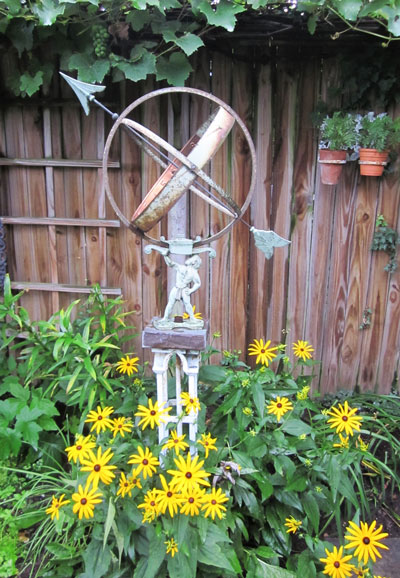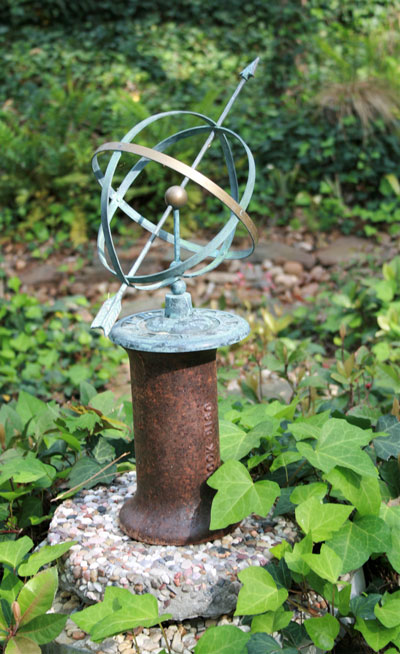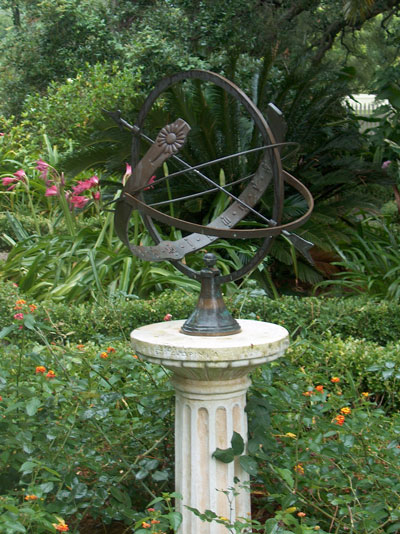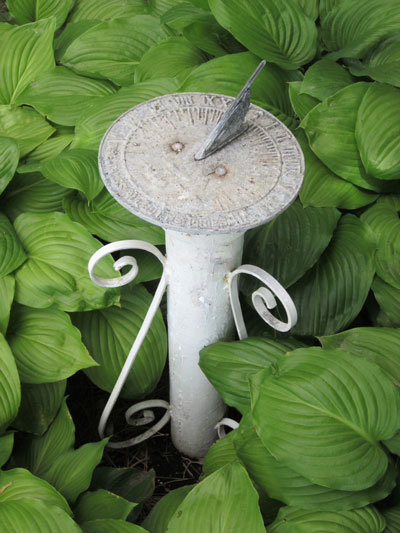Showcase time and tradition with a sundial

Let others tell of storms and showers,
I’ll only count your sunny hours.
Sundial inscription from 1767
If ever there was a timepiece that passed the test of time, it’s the sundial—the world’s oldest clock. And what a pedigree! Evidence puts early shadow clocks near tombs in Egypt’s Valley of the Kings (c. 1500 BC). Eight centuries later sundials were described in the Old Testament. Along with a water clock and wind vane, Greek astronomer Andronicus included sundials in his octagonal Tower of the Winds. Italian astronomers, too, were enamored by the ancient shadow-casters as evident by a lengthy treatise penned in 1570.

As time marched on, sundial styles and designs evolved past vertical and horizontal dials to include armillary spheres, cones, and cylinders, among the many other-worldly-looking configurations.
Despite their diverse shapes, sundials rely on common elements to mark time. For instance, horizontal sundials, a fashionable garden accessory since Victorian-era industrialization made them readily available, cast the sun’s shadow across an upright, triangular-shaped blade (gnomon) onto a flat, clock-like surface (dial plate) inscribed with hour lines. Globe-shaped armillary sundials feature an arrow instead of a gnomon. An equatorial ring displays the hours.

But before you set your watch by one of these ancient timepieces, make sure the angle of the gnomon is aligned to meet location-specific criteria. Go to www.sundials.org or other online sundial sites for help with the adjustments.

For folks more interested in garden décor than the technicalities of ancient timekeeping, it’s far more fun to focus on sundials’ Old World demeanor, made all the more charming by the epigrams etched on their sun-loving faces. Witticisms first appeared on sundials in the 16th Century, inscribed there by expressive artisans. Today, sundials bear mottos about the passage of time (“Today is yesterday’s tomorrow”), the enduring nature of friendship (“Time passes, friendship remains”), and virtue (“All hours are the same. They are distinguished only by good deeds”). Some inscriptions proclaim the reliability — or unreliability — of the dial itself (“I am a sundial and I make a botch of what is done better by a watch”). And not to be left out, there are ditties that appeal especially to gardeners (“Amidst the flowers, I tell the hours”).

Summer’s long, sun-splashed days provide gardeners with ample hours to contemplate sundials’ compelling inscriptions, not to mention their intriguing shapes, 3,500-year history, and heavenly connections.

So why not seize the hour. After all, sundials number among the most endearing and enduring garden accessories under the sun.
